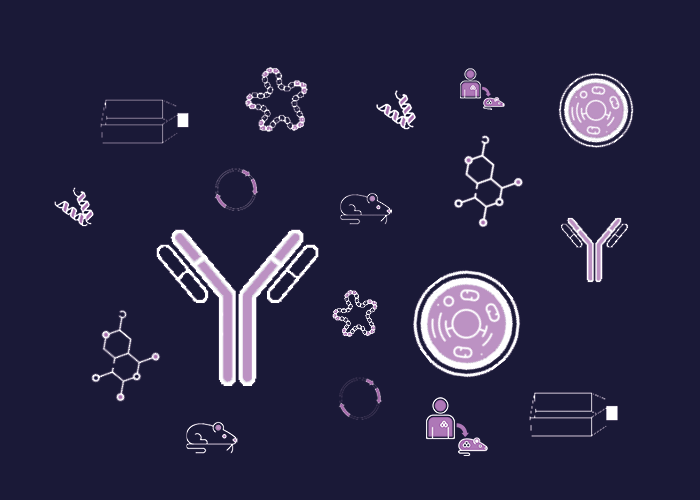
Cat. #151316
Anti-FIH [FIH162C]
Cat. #: 151316
Sub-type: Primary antibody
Unit size: 100 ug
Availability: 3-4 weeks
Target: Factor Inhibiting HIF1 (FIH)
Class: Monoclonal
Application: IHC ; IF ; WB
Reactivity: Human
Host: Mouse
£300.00
This fee is applicable only for non-profit organisations. If you are a for-profit organisation or a researcher working on commercially-sponsored academic research, you will need to contact our licensing team for a commercial use license.
Contributor
Inventor: Helen Turley
Institute: University of Oxford
Tool Details
*FOR RESEARCH USE ONLY (for other uses, please contact the licensing team)
- Name: Anti-FIH [FIH162C]
- Research fields: Cancer;Genetics
- Clone: FIH162C
- Tool sub type: Primary antibody
- Class: Monoclonal
- Conjugation: Unconjugated
- Molecular weight: 40 kDa
- Strain: Balb/c
- Reactivity: Human
- Host: Mouse
- Application: IHC ; IF ; WB
- Description: FIH, Factor Inhibiting HIF1 (Hypoxia-Inducible Factor), is an asparaginyl hydroxylase. FIH in conjunction with VHL represses HIF-1 transcriptional activity by disrupting the interaction of HIF-1 with the transcriptional coactivators CBP/p300, and by recruiting histone deacetylases. FIH activity is inhibited during hypoxia.
- Immunogen: Full length human FIH expressed in Escherichia coli BL21(DE3) cells.
- Isotype: IgG1
- Myeloma used: P3/NS1/1-Ag4.1
- Recommended controls: MCF7 cells
Target Details
- Target: Factor Inhibiting HIF1 (FIH)
- Molecular weight: 40 kDa
- Tissue cell line specificity: MCF7 cells
- Target background: FIH, Factor Inhibiting HIF1 (Hypoxia-Inducible Factor), is an asparaginyl hydroxylase. FIH in conjunction with VHL represses HIF-1 transcriptional activity by disrupting the interaction of HIF-1 with the transcriptional coactivators CBP/p300, and by recruiting histone deacetylases. FIH activity is inhibited during hypoxia.
Applications
- Application: IHC ; IF ; WB
Handling
- Format: Liquid
- Concentration: 1 mg/ml
- Unit size: 100 ug
- Storage buffer: PBS with 0.02% azide
- Storage conditions: -15° C to -25° C
- Shipping conditions: Dry ice
References
- Wollenick et al. 2012. Nucleic Acids Res. 40(5):1928-43. PMID: 22075993.
- Synthetic transactivation screening reveals ETV4 as broad coactivator of hypoxia-inducible factor signaling.
- Yan et al. 2009. Br J Cancer. 101(7):1168-74. PMID: 19724277.
- BRCA1 tumours correlate with a HIF-1alpha phenotype and have a poor prognosis through modulation of hydroxylase enzyme profile expression.
- Cockman et al. 2006. Proc Natl Acad Sci U S A. 103(40):14767-72. PMID: 17003112.
- Posttranslational hydroxylation of ankyrin repeats in IkappaB proteins by the hypoxia-inducible factor (HIF) asparaginyl hydroxylase, factor inhibiting HIF (FIH).
- Soilleux et al. 2005. Histopathology. 47(6):602-10. PMID: 16324198.
- Use of novel monoclonal antibodies to determine the expression and distribution of the hypoxia regulatory factors PHD-1, PHD-2, PHD-3 and FIH in normal and neoplastic human tissues.
- Stolze et al. 2004. J Biol Chem. 279(41):42719-25. PMID: 15302861.
- Genetic analysis of the role of the asparaginyl hydroxylase factor inhibiting hypoxia-inducible factor (FIH) in regulating hypoxia-inducible factor (HIF) transcriptional target genes [corrected].


